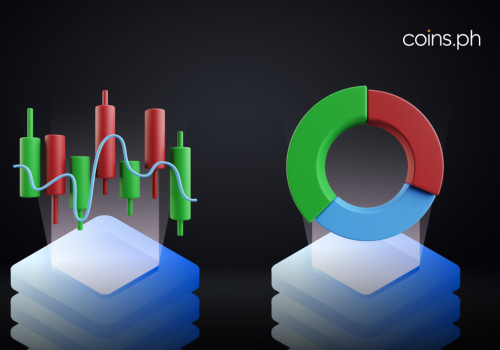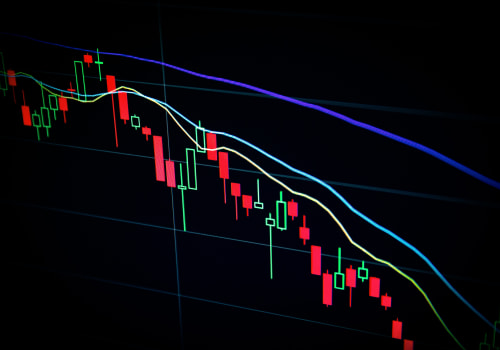Are you interested in implementing a system in a live account? Then you have come to the right place! This article will provide a comprehensive overview of what is involved in implementing a system in a live account, from understanding the basics of forex trading to evaluating the performance of the system. We'll discuss the key considerations for building and using a successful system, including how to set up the trading environment, develop an effective strategy, and optimize your results. We'll also explain how to monitor and assess the performance of your system so that you can make adjustments and improve its success. Finally, we'll cover some of the common mistakes traders make when implementing a system and how to avoid them.
So let's get started!The first step when implementing a system in a live account is to ensure that the system is compatible with the broker's trading platform. Different brokers use different platforms, so it is important to check that the system you are using is compatible with the platform used by the broker. Once compatibility has been established, it is important to understand how the system works and how it can be used to trade successfully. This involves familiarizing yourself with the various elements of the system, such as entry and exit criteria, money management rules, and any other features that are included. Once you are familiar with the system, you can begin to test it out on a demo account.
This allows you to simulate trades and get an idea of how the system performs in different market conditions. It is important to test the system thoroughly before implementing it in a live account.When you are confident with the system performance, you can begin to implement it in your live account. This involves setting up your trading platform according to the system requirements and configuring any other necessary settings. Once this is done, you can begin to place trades using the system. It is important to monitor your trades closely and make adjustments if necessary.
Finally, it is important to regularly evaluate your system performance. This involves analyzing your trades and assessing whether they were successful or not. It is also important to adjust your system parameters as needed based on the results of your analysis. Regular evaluation helps ensure that your system is performing as expected and that any changes you make are beneficial.
Testing on Demo Account
It is important to test out a trading system on a demo account before implementing it in a live account.Testing the system on a demo account allows the trader to familiarize themselves with the system and make sure that it works as expected in real-time market conditions. By testing the system on a demo account, traders can also get an idea of how the system will perform in real-time without risking any of their own capital. When testing a trading system on a demo account, it is important to ensure that the data used is as close to real-time as possible. This will help to ensure that the system is being tested with realistic market conditions and not just relying on historical data.
Additionally, it is important to test the system over a long period of time, as this will provide the most accurate picture of how the system will perform in the future. It is also important to pay close attention to how the system behaves in different market conditions. A system may work well in one market condition but fail in another, so it is important to make sure that the system is tested in a variety of market conditions. Additionally, it is important to pay attention to the drawdown and risk associated with the trading system, as this can have an impact on overall profitability.
Understanding the System
When it comes to implementing a trading system in a live account, it is essential to understand how the system works before taking any action.The reasons for this are twofold. Firstly, if you do not understand the mechanics of the system, you may not be able to accurately assess its performance. Secondly, if you do not understand the system and its underlying logic, you may be more prone to making mistakes in the implementation process. It is important to have a thorough understanding of the system's entry and exit rules, as well as its risk management strategy. Having a clear idea of these aspects of the system will allow you to make informed decisions about where and when to enter and exit trades.
Additionally, you will need to be aware of the various parameters that can affect the performance of the system, such as leverage, stop-loss levels, and take-profit levels. When evaluating a system's performance, it is also important to consider other factors, such as market conditions and liquidity. By understanding how these factors interact with each other, you can be better prepared to make decisions about when to enter and exit positions. Additionally, it is important to consider how the system will perform in different market environments.
Implementing in Live Account
When it comes to implementing a trading system in a live account, there are several steps involved. First, traders should review the system’s performance in a demo account, where they can simulate real-time trading without risking any capital.This allows traders to test out the system and gain confidence before deploying it in a live account. Once traders are satisfied with the system’s performance in the demo account, they can move on to the next step: deploying the system in a live account. This involves setting up the trading system, including any indicators or other components, and configuring it according to the trader’s preferences. Traders should also ensure that their trading platform is properly connected and that the system is running smoothly. Once the system is deployed, traders can begin placing orders using the system. They should also monitor the system’s performance closely and make any necessary adjustments to ensure that it is performing optimally.
Finally, traders should regularly evaluate their system’s performance and adjust accordingly.}
Compatibility Check
When implementing a trading system in a live account, it is essential to ensure that the system is compatible with the broker's trading platform. This is necessary to guarantee that the system will be able to access the market data it needs, and execute the trades it generates in a timely and accurate manner. The first step in this process is to check that the system’s trading platform and the broker’s trading platform are compatible. This can usually be done by checking the system’s website for any compatibility information. If the system does not provide this information, you can contact the system’s support team for more information. Once you have confirmed that the trading platforms are compatible, you should also check that the broker’s trading platform has all of the features needed to make the system work properly.This includes features such as order entry, trade management, charting tools, and other features. If any of these features are missing or inadequate, you should consider switching to another broker. Finally, it is important to make sure that the broker’s trading platform is secure and reliable. You should check for any security issues or bugs that could affect the system’s performance. In addition, you should also make sure that the broker provides good customer support, in case you need help with any technical issues.
Evaluating Performance
Once you have implemented a trading system in your live account, it is important to monitor and evaluate the system performance regularly.This will give you an indication of how effective the system is and whether it is meeting your expectations. It is also important to identify any potential problems or weaknesses in the system that could lead to losses. Monitoring and evaluating performance should be done on a regular basis, as the system may need to be adjusted or improved in order to ensure optimal results. It is also important to review your trading system on a regular basis and make adjustments where necessary. This could include changing the parameters of the system, such as the entry and exit points, as well as adjusting the risk management strategy. When evaluating your trading system's performance, it is important to look at both short-term and long-term performance.
This will help you determine whether your system is suitable for long-term success or whether it needs to be adapted in order to generate better returns in the future. It is also important to look at the overall profitability of your system, as this will give you an indication of how successful it is. In addition to monitoring and evaluating performance, it is also important to compare the performance of your system with other systems in the same market. This will help you identify whether there are any areas where your system is outperforming other systems and can be further improved. Finally, it is important to keep track of any changes that you make to your system. This will help you identify which changes are working and which ones are not so that you can adjust them accordingly.
By monitoring and evaluating your trading system's performance regularly, you will be able to identify any issues or potential problems before they become major issues. The process of implementing a trading system in a live account can seem daunting, but by following the steps of compatibility check, understanding the system, testing on a demo account, and evaluating performance, traders can ensure that their system runs smoothly and they are able to make profitable trades.












Leave Reply